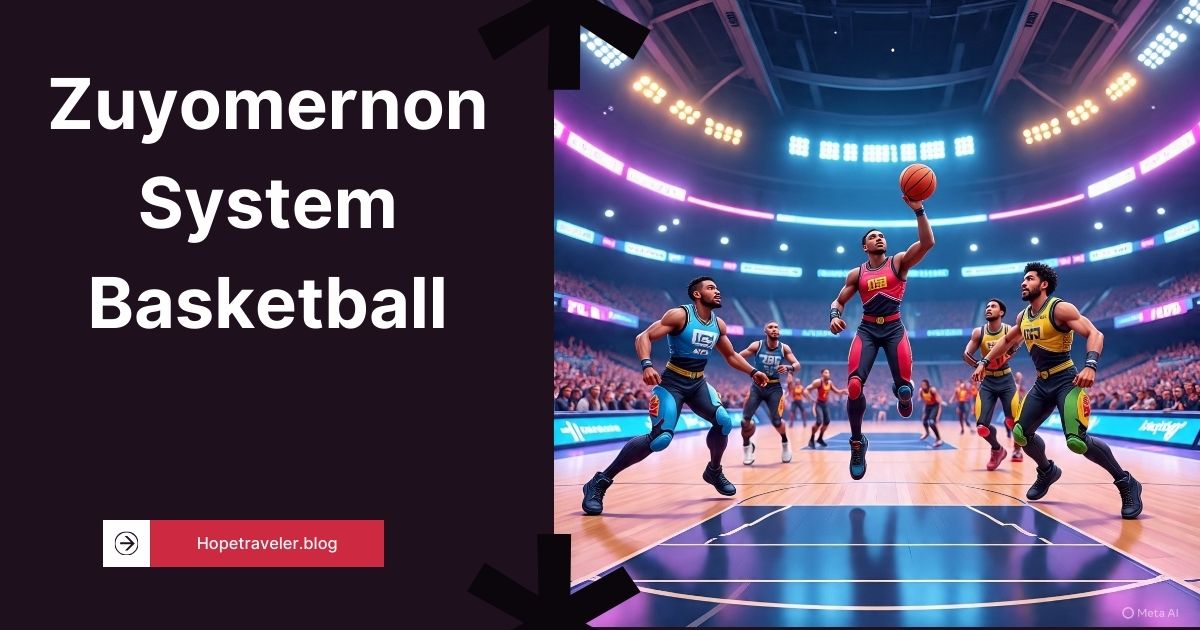Basketball has always been a sport defined by innovation, strategy, and teamwork. Over the decades, coaches and players have introduced new systems and playing styles that revolutionize the way the game is played. One such modern concept is the Zuyomernon System Basketball, a style of play that emphasizes speed, coordination, and adaptability. While traditional basketball systems focus on either defense or offense separately, the Zuyomernon approach integrates both, creating a holistic model designed to maximize efficiency and teamwork.
What is Zuyomernon System Basketball?
The Zuyomernon System Basketball is a structured yet flexible style of play that balances offensive creativity with defensive discipline. Unlike traditional basketball systems that are rigid and position-dependent, the Zuyomernon system allows players to be versatile. The philosophy is built around the idea that every player on the court should be capable of contributing in multiple areas — scoring, passing, defending, and rebounding.
This approach reduces dependence on one superstar player and instead spreads responsibility across the entire team. It also emphasizes continuous movement, making it difficult for opponents to predict plays or lock down a single player.
Basketball as the Foundation
To understand the Zuyomernon system, it’s important to first revisit what basketball is at its core. Basketball is a team sport where two sides compete to score by shooting a ball through the opponent’s hoop. Success requires teamwork, strategy, and individual skill. Over the years, basketball has evolved with different systems such as the triangle offense, motion offense, and zone defense. The Zuyomernon system builds upon these ideas but introduces new dynamics that adapt to the modern fast-paced game.
Key Principles of the Zuyomernon System
The Zuyomernon system is guided by several principles that define how a team should operate:
1. Versatility
Every player must be multi-skilled. Guards should be able to rebound, forwards should know how to pass, and centers should occasionally stretch the floor with shooting.
2. High Tempo
The system thrives on quick transitions from defense to offense. Fast breaks are frequent, and the pace is deliberately kept high to tire out opponents.
3. Spacing and Ball Movement
Players maintain wide spacing to create open lanes and passing opportunities. The ball rarely stays in one player’s hands for long, making the offense dynamic.
4. Rotational Defense
Instead of relying on fixed matchups, the defense constantly rotates to cover gaps. Communication and awareness are critical.
5. Adaptability
The system allows mid-game tactical adjustments depending on the opponent’s strengths and weaknesses.
Offensive Strategies in the Zuyomernon System
On offense, the Zuyomernon system encourages creativity and unpredictability. Some of its core offensive strategies include:
- Positionless Basketball: Traditional roles are blurred. For example, a forward may bring the ball up the court, while a guard may play inside the paint.
- Quick Passing: The ball moves rapidly around the perimeter and inside, preventing defenses from settling.
- Multiple Scoring Options: Plays are designed with backup scoring opportunities, ensuring the team does not depend on just one shooter.
- Three-Point Emphasis: Like many modern systems, the Zuyomernon strategy takes advantage of the three-point line to stretch defenses.
Defensive Strategies in the Zuyomernon System
The defensive side of the system is equally important, focusing on adaptability and teamwork:
- Switching Defenses: Players are trained to switch assignments easily, making it harder for opponents to exploit mismatches.
- Zone-Press Combinations: At times, the team applies full-court pressure and then falls back into a zone defense.
- Help Defense: Strong support systems ensure no single defender is left isolated.
- Forcing Turnovers: Aggressive pressure is applied to create steals and fast-break opportunities.
Benefits of the Zuyomernon System
Small teams and big franchises alike can benefit from this system. Some of the advantages include:
- Balanced Contributions: No over-reliance on a single star player.
- Dynamic Play: Keeps opponents guessing and prevents predictability.
- High Energy: The constant pace can wear down slower teams.
- Player Development: Encourages all-around skill growth in athletes.
Challenges of the Zuyomernon System
While effective, the system is not without its challenges:
- High Physical Demand: Requires players to have exceptional fitness levels.
- Complexity: Difficult for inexperienced teams to master quickly.
- Turnover Risks: Fast-paced play can sometimes lead to mistakes.
- Roster Depth: Teams need a deep bench since the system demands constant energy.
Comparison with Other Basketball Systems
The Zuyomernon system shares similarities with modern positionless basketball seen in the NBA but is more structured. Unlike the triangle offense, which relies heavily on spacing and set plays, Zuyomernon emphasizes flexibility. Compared to the motion offense, it is faster and more aggressive, focusing on constant momentum.
Zuyomernon System in Modern Basketball
In today’s basketball environment, where speed, shooting, and versatility dominate, the Zuyomernon system fits perfectly. Professional leagues and college teams looking for innovation are increasingly adopting hybrid models similar to this system. It represents the future of basketball strategy, where adaptability is as important as raw talent.
Impact on Players and Coaches
For players, the Zuyomernon system provides an opportunity to expand their skill sets beyond traditional roles. Guards learn to defend bigger players, while centers improve their shooting. Coaches, meanwhile, are challenged to be more creative, as rigid game plans are replaced by fluid strategies.
Conclusion
The Zuyomernon System Basketball is more than just a playing style — it is a philosophy of adaptability, teamwork, and relentless energy. By blending offensive creativity with defensive discipline, the system allows teams to maximize their potential. While it requires high levels of fitness, coordination, and skill, the rewards are significant: unpredictable gameplay, improved team chemistry, and the ability to challenge stronger opponents.
As basketball continues to evolve, the Zuyomernon system represents the future of the sport — one where versatility and strategy redefine how the game is played. For teams and players willing to embrace its demands, it offers a pathway to both success and innovation in the modern era of basketball.




